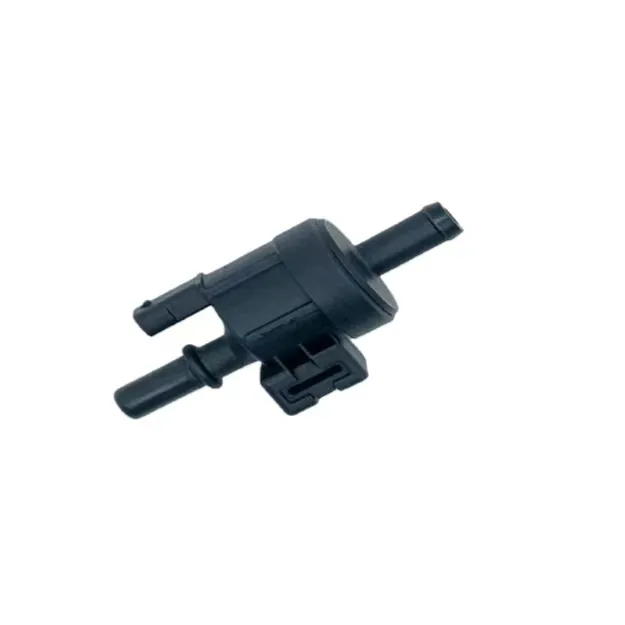Understanding the Importance of a High-Pressure Fuel Pump in Modern Engines
2024-08-28
The automotive world is rapidly evolving, with engines becoming more powerful, efficient, and environmentally friendly. A key component in this evolution is the High-Pressure Fuel Pump (HPFP)—a crucial part of the fuel delivery system in modern internal combustion engines. Understanding how this pump works and its importance can help car enthusiasts, mechanics, and everyday drivers appreciate the advanced technology under the hood.
What is a High-Pressure Fuel Pump?
A High-Pressure Fuel Pump is a device that compresses fuel to a very high pressure before delivering it to the engine's fuel injectors. This process ensures that the fuel is atomized into a fine mist, which mixes effectively with air in the combustion chamber, leading to more efficient and complete combustion.
HPFPs are commonly found in direct fuel injection systems, which are increasingly used in modern gasoline and diesel engines. These systems operate at much higher pressures than traditional fuel injection systems, typically in the range of 500 to 2,500 bar (7,250 to 36,250 psi).
The Role of High-Pressure Fuel Pumps in Engine Performance
1. Improved Fuel Efficiency: One of the primary advantages of high-pressure fuel pumps is their ability to improve fuel efficiency. By delivering fuel at high pressure, the HPFP ensures that the fuel is finely atomized, which leads to more efficient combustion. This efficiency translates to better fuel economy, allowing vehicles to travel further on the same amount of fuel.
2. Enhanced Engine Power: High-pressure fuel pumps also contribute to increased engine power. The precise fuel delivery and improved combustion process result in more energy being extracted from the fuel, boosting the engine's performance. This is particularly important in high-performance vehicles, where power and responsiveness are key factors.
3. Lower Emissions: As governments and consumers demand cleaner vehicles, the role of the HPFP becomes even more critical. By optimizing the combustion process, high-pressure fuel pumps help reduce the emission of harmful pollutants like carbon monoxide, hydrocarbons, and nitrogen oxides. This not only helps in meeting stringent emission standards but also reduces the vehicle's environmental impact.
4. Smooth Engine Operation: HPFPs contribute to the smooth and reliable operation of modern engines. The consistent and precise fuel delivery helps maintain stable engine performance under various driving conditions, from idling to full throttle. This reliability is crucial for both everyday driving and high-performance scenarios.
How High-Pressure Fuel Pumps Work
The operation of a high-pressure fuel pump involves several key steps:
1. Fuel Intake: Fuel is drawn from the fuel tank by the low-pressure fuel pump and delivered to the high-pressure fuel pump.
2. Compression: Inside the HPFP, the fuel is compressed to extremely high pressures using a piston or diaphragm mechanism. The pump's design ensures that the fuel reaches the necessary pressure to be effectively atomized by the injectors.
3. Delivery: Once the fuel is compressed, it is sent to the fuel injectors at high pressure. The injectors then spray the fuel into the combustion chamber in a fine mist, where it mixes with air and is ignited by the spark plug or compressed in a diesel engine.
4. Control: Modern HPFPs are controlled by the engine's electronic control unit (ECU), which adjusts the pump's operation based on real-time data from various sensors. This ensures that the right amount of fuel is delivered at the correct pressure under all driving conditions.
Common Issues with High-Pressure Fuel Pumps
Like any mechanical component, high-pressure fuel pumps can experience issues over time. Some common problems include:
1. Wear and Tear: The high pressures and precise tolerances in HPFPs mean that components can wear out over time. This can lead to reduced fuel pressure, poor engine performance, and even complete pump failure.
2. Fuel Contamination: Contaminants in the fuel, such as dirt, water, or metal particles, can damage the internal components of the HPFP. This can result in reduced efficiency, clogging, or failure of the pump.
3. Electronic Failures: Since modern HPFPs are electronically controlled, issues with the ECU or sensors can lead to improper fuel delivery. This can cause poor engine performance, increased emissions, or stalling.
4. Fuel Leakage: High-pressure fuel pumps are subject to high levels of stress, which can sometimes lead to fuel leaks. This is not only a performance issue but also a safety concern, as leaking fuel can pose a fire hazard.
Maintenance and Care of High-Pressure Fuel Pumps
Proper maintenance of your vehicle's high-pressure fuel pump is essential to ensure its longevity and reliability. Here are some tips:
1. Use Quality Fuel: Always use high-quality fuel from reputable sources to minimize the risk of contamination. Consider using fuel additives designed to clean and protect the fuel system.
2. Regular Inspections: Have your vehicle's fuel system inspected regularly by a qualified mechanic. This includes checking the fuel filter, fuel lines, and HPFP for signs of wear or damage.
3. Address Issues Promptly: If you notice symptoms like reduced engine power, increased fuel consumption, or difficulty starting the engine, have your vehicle checked as soon as possible. Early diagnosis can prevent more severe problems.
4. Keep Up with Scheduled Maintenance: Follow your vehicle manufacturer's recommended maintenance schedule, including fuel filter changes and any specific services for the fuel system.
Conclusion
The high-pressure fuel pump is a critical component in modern engines, playing a vital role in improving fuel efficiency, boosting engine power, reducing emissions, and ensuring smooth operation. As vehicles become more advanced, the importance of this technology will only continue to grow. By understanding how HPFPs work and taking steps to maintain them, you can ensure that your engine runs efficiently and reliably for years to come.
Whether you're a car enthusiast or a daily commuter, appreciating the technology behind your vehicle's performance can lead to better maintenance practices and a deeper connection with the machine that takes you places.



